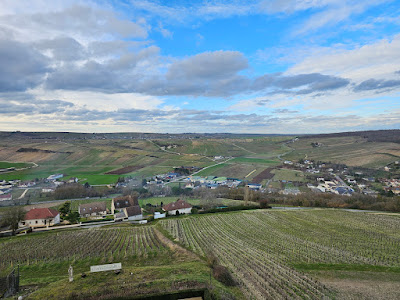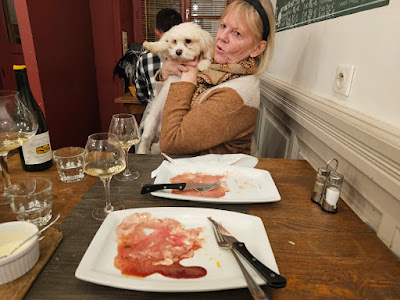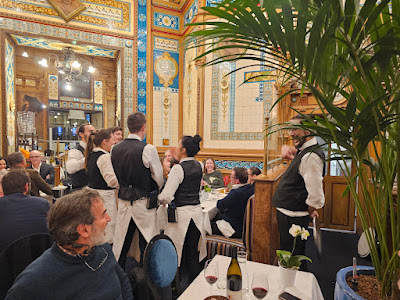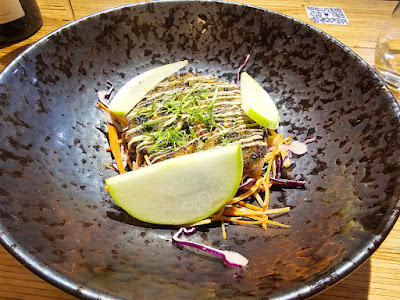Château de Chambord is the most visited Loire château. For any Loire Valley Tour, a visit of Château de Chambord is a must. Consequently, on the forthcoming Loire Valley Tour by ombiasy WineTours, we will spend half a day at Château de Chambord.
See: Announcement: Loire Valley 2024 by ombiasy WineTours (Sunday, June 09 - Thursday June 20, 2024)
The château was built to act as a hunting lodge for King Francis I over several decades. However, the king spent barely seven weeks there in total, that time consisting of short hunting visits. After Francis I died in 1547, the château was not used for almost a century.
François I began with the construction of the château in 1519. That same year, a royal decree shows that he brought 80,000 vines from Beaune in Burgundy to be planted in the Loire Valley.
Until 1950s, a dozen farms operated on the estate. But there was no winery. This has changed recently, with the creation of a 40 acres vineyard and the convertion of the Ormetrou farm in a winery.
When Annette and I visited the Salons des Vins in Angers earlier this year, we run into the winemaker of Château de Chambord and tasted the Château de Chambord wines. Then at Château de Chambord, we also went to the vineyard and the winery.
See: Salons des Vins - all with a Focus on Natural, Organic, Biodynamic and Low-intervention Producers in the Loire Valley and elsewhere in France and Europe - in February in Angers and Samour, Loire Valley, France (February 2024)
On the June 2024 Loire Valley Tour by ombiasy WineTours, we will tour Château de Chambord, but not visit the winery. Hopefully, we will be able to have some Chambord wine when we are there.
Château de Chambord is the largest of the Loire castles and also the most visited. The chateau is situated in the eastern part of the Loire Valley, a short distance east of Blois.
Originally built as a 'hunting lodge' for King Francois I - his 'main' royal palaces can be seen at the Château d'Amboise and the Château de Blois - Chambord is a magnificent sight both when viewed from outside and when enjoying a tour of the opulent interiors. The castle was designed and built to excel, and it does that grandly: even the Loire River is said to have been diverted to make a bit more space for its construction!
Château de Chambord was built in the first half of the 16th century, in what is known as the 'French renaissance' style. It has a central structure, with large towers on each corner and a mulitude of smaller towers and structures, which itself forms part of a larger structure - a second square that incorporates the main chateau, two further substantial corner towers, and a large enclosed courtyard.
This layout suggests that the castle follows a medieval defensive structure - which it does broadly - but Chambord never played, or was intended to play, any kind of defensive role.
The castle at Chambord was built as a hunting lodge, although after spending more than two decades having the castle built, Francois I himself only actually spent seven weeks in the castle, when he was hunting in the region. A King's hunting party consisted of around 2000 people, making the logistics of a visit very complicated. Since the castle was more or less unused, it also remained unfurnished and of course unheated at that time.
The roofline of Château de Chambord has numerous turrets that give it its distinctive 'skyline': these are the tops of the staircases and chimneys inside the chateau. The central round tower is the cupola for the immense double helix staircase, the design of which is sometimes attributed to Leonardo da Vinci, and is very impressive. Apparently Francois I required a roof that reminded him of Constantinople!
After the death of Francois I in 1547 the castle remained in a state of abandon for almost 100 years, at which point Gaston d'Orleans was given the castle by his brother, King Louis XIII. He started major renovation works, which were subsequently carried on by King Louis XIV who also had the immense stables built, sufficient to house the several hundred horses that were needed for a royal hunting trip.
Despite all this work and expense, Louis XIV (the Sun King) also abandoned the castle after a few years, from 1685.
Chambord castle had a couple more periods of occupation over the following century, both relatively brief, and by 1750 it was once again in a state of abandon. While the revolution spared the structure it did result in the furnishings that had been added during the renovation works to be sold, and the castle remained empty until the early 19th century.
A French miltary leader was then given the property by Napoleon - he died soon after and his widow sold the castle to the Duke of Bordeaux, who soon after got exiled from France. Another forty years on and Chambord was pressed into service as a hospital during the 1871 Franco-Prussian war. Yet again the decades that followed led to the castle changing hands on occasion, and being occupied for some periods.
In the middle of the 20th century the castle passed into government ownership and was subsequently renovated: when you visit and see the extraordinary size and grandeur of the structure it is remarkable to remember that Chambord has stood empty for the large majority of the last 550 years.
In recent decades a great deal of work has been carried out on the castle, now under the control of the French State, and it is now a major tourist attraction in the region. Apart from the splendours of the building itself you can also admire a fine collection of furnishings, works of art and tapestries, and a small interesting collection of horse-drawn carriages.
Château de Chambord Wines Restauration Project
François I began with the construction of the château in 1519. That same year, a royal decree shows that he brought 80,000 vines from Beaune in Burgundy to be planted in the Loire Valley.
Until
1950s, a dozen farms operated on the estate. But there was no winery.
This has changed recently, with the creation of a 40 acres vineyard and
the convertion of the Ormetrou farm in a winery.
In June 2015, the National Estate of Chambord replanted the "François I Vineyard”, 500 years after its introduction in Val de Loire. The grape varieties chosen were those from the region of Romorantin, in memory of François I, who brought the fruit of the vine to Val de Loire in 1519. Plantation entailed two phases: While 15 acres were planted in June 2015 (5 acres of pre-phylloxera Romorantin and 10 acres of Pinot Noir), 20 acres were added in 2016 and 2017 (pre-phylloxera Romorantin plants, Gamay and Pinot blanc).
The first Chambord harvest took place in September 2018, covering four hectares. Seventy-five hectoliters of the pinot noir gamay blend and twenty-six hectoliters of the Romorantinvariety were harvested at that time. The first bottles were sold in March 2019, for the 500-year vintage.The Chambord winery is located in the old buildings of the Ormetrou farm, near the vineyards. The buildings, made up of two barns, one dating from the 17th century, and the other from the early 19th century, were renovated to accommodate 14 stainless steel vats and some oak barrels from Chambord’s forest.
The rehabilitation was completed the first trimester of 2022, after one year. A tasting room had been set up in the former dwelling house, with a magnificent view of the château.
The wines being produced now are:
• a red wine, a blend of Pinot Noir and Gamay (about 84% Pinot Noir and 16% Gamay, in accordance with the “AOC Cheverny” specifications),
• a white wine made from the Orbois variety blended with the Sauvignon variety (about 60% Sauvignon and 40% Orbois, in accordance with the “AOC Cheverny” specifications),
• a white wine made from a single historical grape variety called Romorantin.
The Wines of Château de Chambord
When Annette and I visited the Salons des Vins in Angers earlier this year, we run into the winemaker of Château de Chambord and tasted the Château de Chambord wines. Then at Château de Chambord, we also went to the vineyard and the winery.
See: Salons des Vins - all
with a Focus on Natural, Organic, Biodynamic and Low-intervention
Producers in the Loire Valley and elsewhere in France and Europe - in
February in Angers and Samour, Loire Valley, France (February 2024)
See: Announcement: Loire Valley 2024 by ombiasy WineTours (Sunday, June 09 - Thursday June 20, 2024)






































